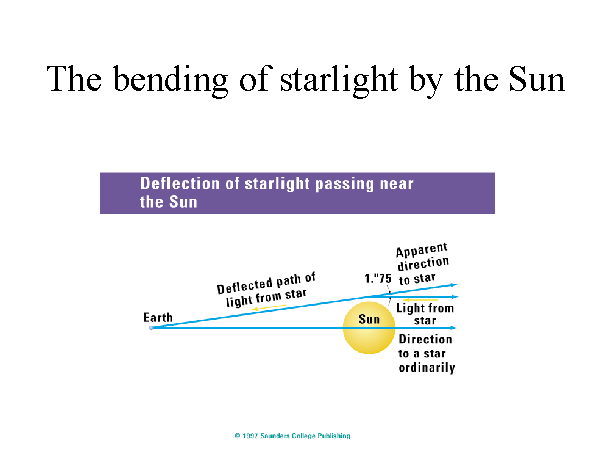Light bending
If we imagine observing a beam of light in an accelerated elevator we will
see that the light path is curved. By the equivalence principle the same
must be true for light whenever gravitational forces are present. This
was tested by carefully recording the position of stars near the rim of
the sun during an eclipse (see Fig. 7.22)
and then observing the same stars half a year later when there is no eclipse.
During the eclipse the observed starlight reaches us only after passing
through a region where gravitational effects from the sun are very strong
(that is why only stars near the rim are used), but the observation a year
later are done at a time where the gravitational effects of the sun on
starlight are negligible.
It is found that the position of the stars are displaced when photographs
of both situations are compared (see Fig. 7.22).
The deviations are the same as the ones predicted by General Relativity.
Figure 7.22: Illustration of the effects of the gravitational
bending of light: during an eclipse the observed positions of the stars
will be shifted away from the Sun.
![\begin{figure}\centerline{ \vbox to 2.3 truein{\epsfysize=6 truein\epsfbox[0 -270 612 522]{7.gtr/light_bend2.ps}} }\end{figure}](img251.gif) |

![\begin{figure}\centerline{ \vbox to 2.3 truein{\epsfysize=6 truein\epsfbox[0 -270 612 522]{7.gtr/light_bend2.ps}} }\end{figure}](img251.gif)
![\begin{figure}\centerline{ \vbox to 2.3 truein{\epsfysize=6 truein\epsfbox[0 -270 612 522]{7.gtr/light_bend2.ps}} }\end{figure}](img251.gif)
